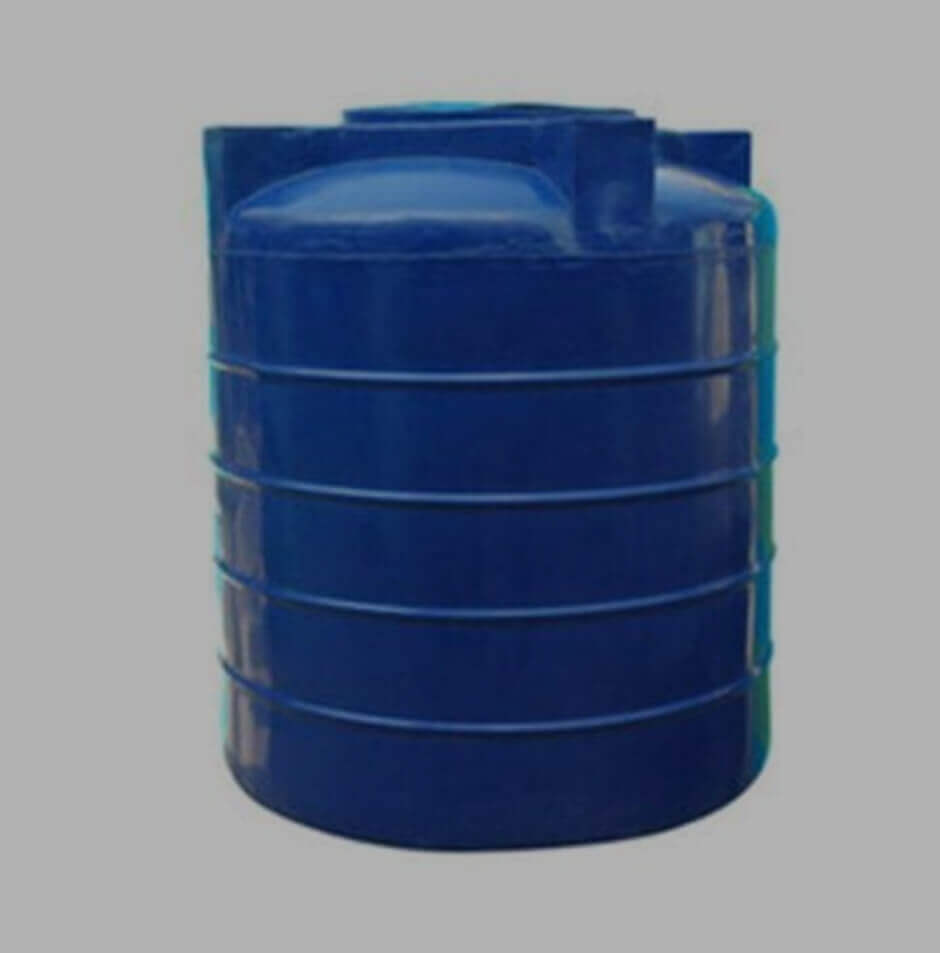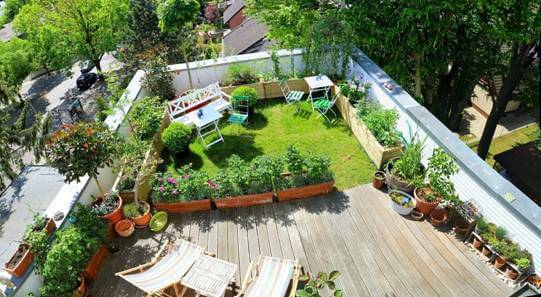The basic components of cement mortar are cement, water and aggregates. But, often, other substances are added to these three in preparing the cement mortar. The purpose of these additional substances is to improve the quality of the mortar. These substances are collectively called admixtures. Admixtures can be broadly classified into two types – chemical admixtures and mineral admixtures.
Mineral admixtures are basically derived from other substances and not chemically manufactured. Fly ash, blast furnace slag, silica fume are popular examples of mineral admixtures.
Important Mineral Admixtures and their Affect on Concrete
Fly ash, ground granulated blast furnace slag and silica fume are the most commonly used mineral admixtures. They have different roles to play in the concrete mix and enhance various properties of the concrete.
Admixture-1: Fly Ash
Pulverized coal is combusted in thermal power plants for electricity generation. A by-product of this combustion reaction is fly ash. The electrostatic precipitators (ESPs) used inside chimneys of the power plants remove fly ash before ejecting out the combustion gases into the atmosphere. Fly ash is a very fine particle like residue, which has pozzolanic properties. Hence it is often blended with cement.
Fly ash consists of silica (SiO2), alumina (Al2O3) and calcium oxide (CaO) as its major components. Fly ash can be of two types – C type and F type. C type fly ash is rich in calcium and possesses both cementitious and pozzolanic properties whereas F type fly ash is low in calcium content and possesses only pozzolanic properties.
- Fly ash particles are mostly spherical and increase the workability of concrete.
- The setting time of concrete is also increased by adding fly ash to it. Increased setting time allows better hardening of concrete and finally a better strength is obtained.
- Fly ash added to concrete mix reduces the segregation and bleeding of concrete. Segregation of concrete is a case in which particles of different size tend to segregate out. Whereas bleeding of concrete is a situation in which water comes out to the surface of the concrete. Both segregation and bleeding are unwanted.
- The temperature of fresh concrete rises above normal and when it cools down, cracks may develop. Replacing a certain quantity of cement by fly ash helps to reduce this temperature rise, hence avoiding chances of cracking of fresh concrete.
- Creep and shrinkage are usually higher in fly ash added concrete because of the increased amount of paste in the concrete (formed due to mass replacement of cement).
- Sulphate resistance is enhanced.
- Alkali aggregate reaction is inhibited.
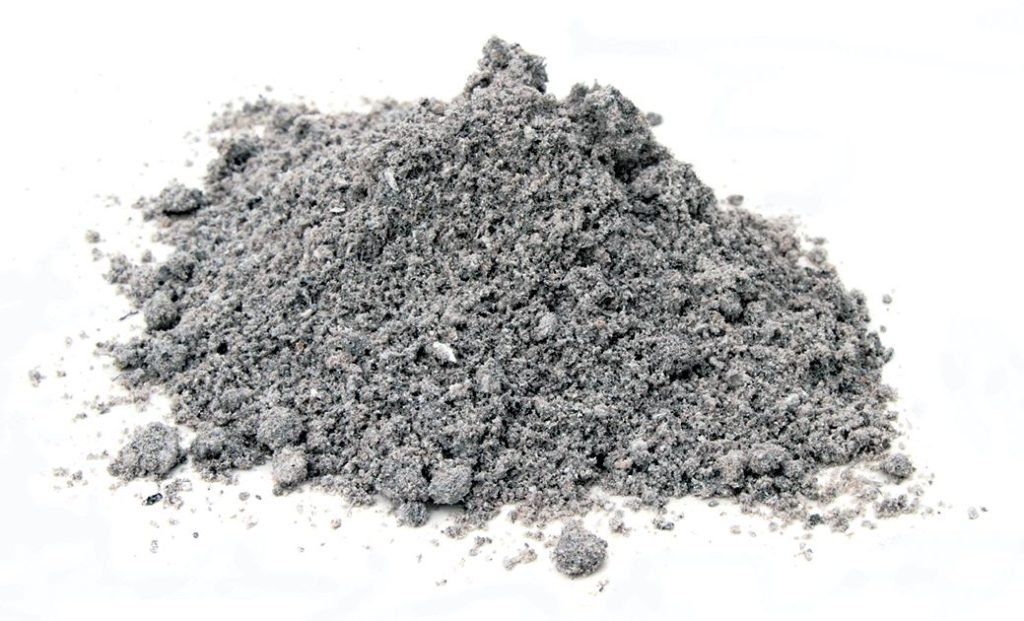

Fly ash
Admixture-2: Ground Granulated Blast Furnace Slag (GGBFS)
Blast furnace slag is a by-product of iron extraction process from iron ore. Amongst all mineral admixtures, blast furnace slag has the highest specific gravity (2.8 to 3.0). Typically, the slag fineness is slightly more than that of the cement.
There are various types of slag possible like air cooled slag, expanded or foamed slag, granulated slag and pelletized slag. Among these only the granulated slag is commonly used as a mineral admixture. It is a highly reactive form of slag and is usually quenched to form a hardened matter which is then ground into particles of fineness almost same as that of cement. Hence the name, ground granulated blast furnace slag.
GGBFS possesses both cementitious and pozzolanic properties. An activator is needed to hydrate the slag.
- GGBFS increases the initial setting time of the concrete. But, it does not alter the workability of the concrete much because its fineness is almost same as that of the cement.
- The rate of strength gain of concrete is diminished by replacement of cement in the concrete with GGBFS.
- The ultimate strength gain is improved by slag replacement and also the durability of the concrete is increased.
- Concrete uses in marine purposes is highly prone to chemical attack and corrosion. GGBFS is a very good admixture in this regard, because it increases resistance to these attacks.
- However, concrete with GGBFS is reported to have higher carbonation rates than normal Portland cement concrete.
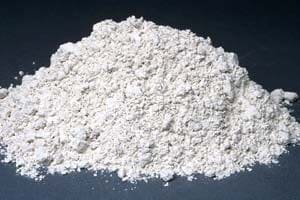

Ground Granulated Blast Furnace Slag (GGBFS)
Admixture-3: Silica Fume
Silica fume is basically very fine particles of amorphous silica. It is produced as a by-product in electric arc furnaces in the production of elemental silica or other silicon based compounds.
Silica fume is highly pozzolanic in nature.
- Being of very fine nature, silica fume increases the water demand of concrete and hence a superplasticizer is almost always used with it.
- Silica fume makes the concrete mix stickier and more cohesive. Usually slump loss problems arise due to addition of silica fume to the concrete.
- There is a drastic reduction in the bleeding of concrete.
- Plastic shrinkage may occur in dry regions where evaporation rate exceeds the rate at which concrete sets.
- The permeability of concrete is reduced. Silica fume acts both as a pozzolan and a filler and due to consequent reactions the transition zone between the aggregates and cement paste is strengthened. Chloride permeability is reduced significantly.
- Compressive and flexural strength of concrete is enhanced. The elastic modulus of concrete is also increased by about 15 % compared to normal Portland cement concrete. Increased elastic modulus implies that the stiffness of the concrete is increased.
- Creep and shrinkage are also increased at higher replacement levels of 10 – 15 %. However, the resistance to creep and shrinkage deformation is also increased because of the increase in stiffness.
- Silica fume concrete mostly shows good resistance to chemical attacks due to the reduced permeability (exceptions of ammonium sulphate and magnesium sulphate are there).
- Silica fume concrete is ideal for industrial flooring because it provides excellent resistance to abrasion and erosion.
- Fire resistance of silica fume concrete is not impressive. It does not allow the entrapped water to vaporise out because of its low permeability. Hence, due to high pressures developing inside, the concrete tends to crack.
- Carbonation depth is usually lowered.
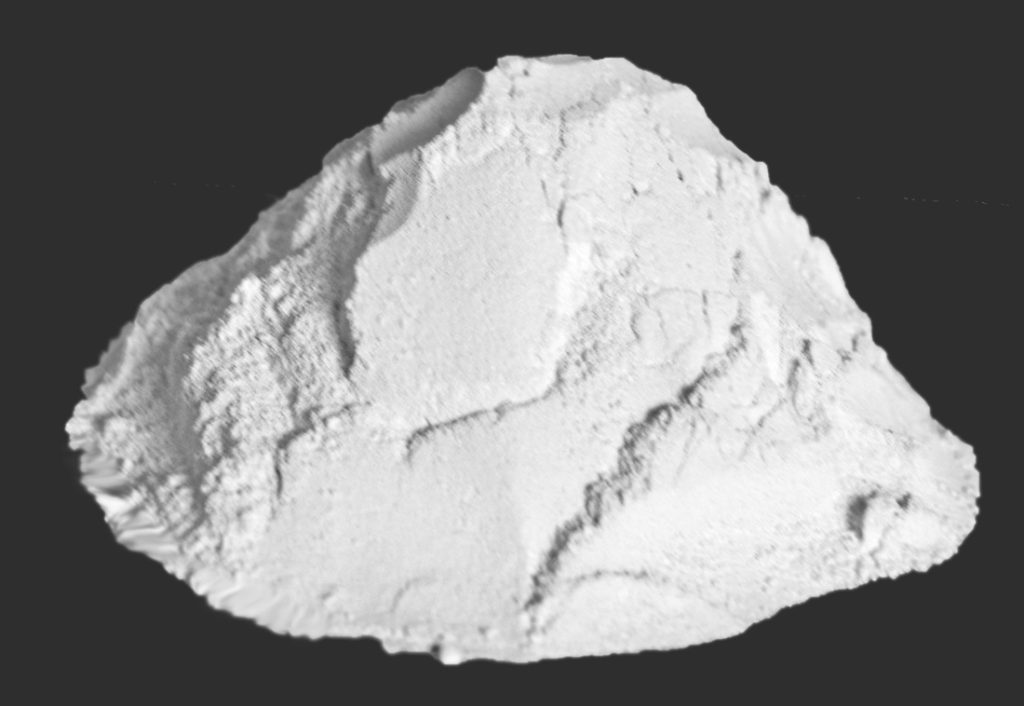

Silica Fumes
Admixture-4: Rice Husk Ash
During milling of the paddy coming from fields, a lot of rice husk is produced. This rice husk is mostly used as a fuel. Rice husk ash is produced by burning the rice husk. It is about a quarter of the mass of the husk. The rice husk ash is a big threat to the environment where it is dumped.
Rice husk ash can be produced by field burning (open) – produces poor quality ash, bed furnace burning (fluidized) and industrial furnace.
Rice husk ash contains a high amount of silica.
- Rice husk ash provides strength to the concrete.
- It also reduces permeability because it is much smaller in size compared to cement particles.
- It reduces the heat of hydration of concrete.
- Rice husk ash also improves the concrete’s resistance to chloride and sulphate attacks.
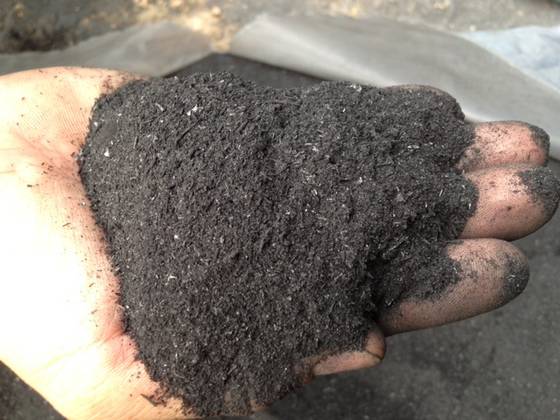

Rice Husk Ash
admixture-5: Metakaolin
Ordinary clay and kaolin clay when thermally activated, is called metakaolin, in the non-purified form. The particle size of metakaolin is smaller than cement particles. Metakaolin is not an industrial by-product like the other admixtures.
- Metakaolin provides strength to the concrete.
- It reduces permeability of the concrete.
- It helps the concrete resist chemical attacks.
- It makes the concrete more durable.
- It helps in early strength development in concrete.
- Bleeding of concrete is considerably reduced upon metakaolin addition.
Metakaolin is also used in fibre-cement and ferro-cement products. It is also used in art sculptures.


Metakolin
Comparison of Various Mineral Admixtures based on Various Properties
| Fly ash | GGBFS | Silica fume | Rice husk ash | Metakaolin | |
| Physical characteristics | Greyish, lightweight & fine particles | Off white powdery substance heavier than fly ash | Amorphous, very fine particles, heavier than fly ash | Amorphous, very lightweight, fine particles. (Threat to environment.) | Whitish in colour & fine particles. |
| Chemical composition | 20 – 60 % silica 5 – 35 % Al2O3 1 – 12 % CaO Traces of MgO | 28 – 38 % silica 8 – 24 % Al2O3 30 – 50 % CaO 1 – 18 % MgO | 85 % silica 1 % Al2O3 6 % Fe2O3 12 % carbon | 90 % silica 5 % carbon 3 % K2O | Dehydroxilated form of kaolinite clay |
| Source | By-product in thermal power plants | By-product in iron producing blast furnaces | By-product in silicon producing electric arc furnaces | From rice husk | From kaolinite clay |
| % addition in concrete | Upto 30 % cement replacement | 25 – 70 % cement replacement | 3 – 4 parts of cement replacement per 1 part of silica fume | Around 20 % cement replacement | 8 – 10 % cement replacement |
| Advantages of addition | Improves strength and durability of concrete Increased resistance towards chemical attacks Better workability | Improved durability Increased setting time Strength gain continues for a long period of time Reduced risk of damages by alkali – silica reaction Resistant to chloride and sulphate attacks | Better compressive strength and resistance to abrasion Reduced permeability of chloride ions Improved workability Reduces bleeding | Heat of hydration of concrete is reduced Permeability of concrete is reduced Improved resistance to chloride and sulphate attacks | Increased compressive & flexural strengths Reduced permeability More resistant to chemical attacks Durability is increased |
| Availability | Produced in abundance but availability is poor | Sufficient amount of GGBFS is available | Sufficient quantity of silica fume is available | Abundant | Abundant |
In general, all mineral admixtures reduce bleeding of concrete. Admixtures with finer particle size and higher specific surface area are suitable for preparing high density and low permeability concrete.
Increase in water demand due to addition of admixtures may be handled by the use of an effective superplasticizer. All these factors contribute significantly to the rise in use of mineral admixtures. If used properly these can immensely increase the desirable properties of the concrete. Otherwise there is no repair for the poor quality of concrete mix ingredients.


